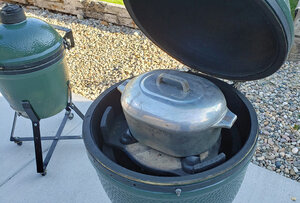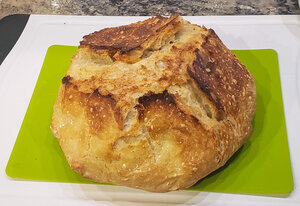i have been using my Lodge Dutch oven for round loaves and would like to hear what others use for oval loaves. I found some CI rectangular Dutch over like items but they are kinda spendy.
what do you use for oval / baguette SD loaves
Topic #2 - rosemary SD. how much fresh rosemary should I add to my dough for a rosemary SD?
thank for the assist!
what do you use for oval / baguette SD loaves
Topic #2 - rosemary SD. how much fresh rosemary should I add to my dough for a rosemary SD?
thank for the assist!







